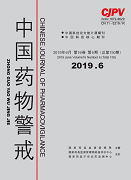|
|
Using Global Trigger Tool to Monitor Adverse Drug Events in Inpatients with Psychiatric Disorders
XU Jiayue, HU Qiaozhi, XU Ting
2019, 16(6):
352-359.
Objective To use the global trigger tool (GTT) to monitor adverse drug events (ADEs) of inpatients with psychiatric disorders and evaluate the applicability of the tool. Methods Medical record informations of adult inpatients discharged from the Mental Health Center of West China Hospital, Sichuan University from January 1, 2015 to December 31, 2015 were randomly selected, with a total of 600 cases (50 cases per month). Medical records were reviewed using 31 triggers for ADE monitoring in patients with psychiatric disorders to determine ADE and grade its severity. At the same time, the trigger tool was preliminarily revised according to the Results of the medical record search. Results A total of 600 patients were included in this study, only 15 of the 31 triggers were positive, with a positive frequency of 776 times. Among them, 379 times were effective triggers involving ADE, and a total of 281 ADEs were detected after repeated removal, of which only 25 ADEs were considered to be preventable. ADE/1 000 patients days were 26.96, ADE/100 patients were 46.83%, and 243 patients had ADE at least once, accounting for 40.50% of the total number of patients. Based on the above Results, it is recommended to add two new triggers to the original trigger tool and localize one trigger. Conclusion The global trigger tool has a strong applicability in monitoring adverse drug events of patients with psychiatric disorders, and can provide reference for preventing drug risks. It is worthy to be popularized in medical institutions related to mental health diseases in China, but the tool still needs to be improved to adapt to the monitoring of adverse drug events in patients with psychiatric disorders in this region.
References |
Related Articles |
Metrics
|
